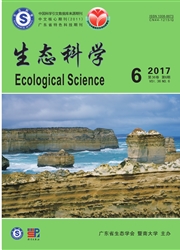

 中文摘要:
中文摘要:
以植株高度、基部粗度、分枝部位、分枝总数、每株角果数等14个考种性状为指标,对西藏各地(市)搜集而来的27份野生芥菜型油菜进行了聚类分析。结果表明:1)当阈值为0.94时,将供试材料分为上生分枝型野生芥菜型油菜(G1)、下生分枝型野生芥菜型油菜(G2)和匀生分枝型野生芥菜型油菜(G3)三大类群;可以根据育种目标及当地的生态因子等选择不同的株型,从而达到稳产、丰产的目的;2)当阈值为0.61时,将材料分为SG1、SG2、SG3、SG4、SG5、SG6、SG7等个七亚类群;发现西藏野生芥菜型油菜种质资源在地理分布上的距离并不能确切反映其遗传上的差异,因此提出研究西藏的作物生长环境时,不应以行政区划为研究标准,应参考当地的区域小气候;3)各西藏野生芥菜型油菜种质资源分类群的考种性状差异明显,生物多样性丰富。
 英文摘要:
英文摘要:
27 mustard materials were collected around Tibet and cluster analysis based on height of plant, stem diameter, branch position, amount of branch and numbers of siliqua properties was done in the present study. The results showed that: 1) At the threshold of 0.94, wild B. juncea germplasm in Tibet could be divided into 3 groups, mainly including branching type of above plant, branching type of below plant and average type, and the above results would be useful in rapeseed breeding; 2)At the threshold of 0.61, they could be divided into 7 subgroups, namely SG1, SG2, SG3, SG4, SG5, SG6 and SG7, therefore, they could be considered as referenced markers of regional microclimate studing on crop growth environment in Tibet; 3)It indicated that the agronomic characters of Tibet mustard germplasm were abundant, and their properties displayed significant differences.
 同期刊论文项目
同期刊论文项目
 同项目期刊论文
同项目期刊论文
 期刊信息
期刊信息
